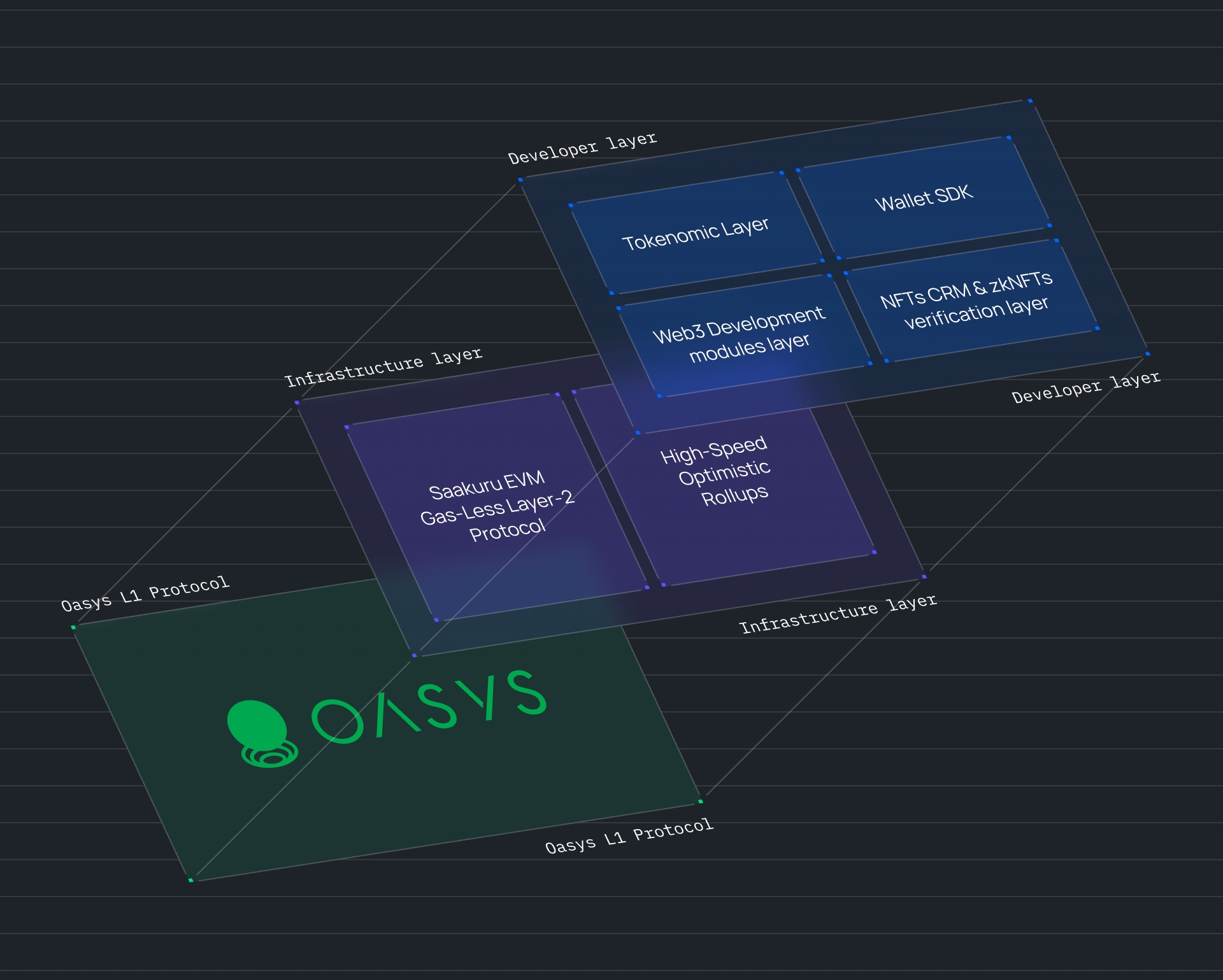Saakuru Blockchain
Saakuru Blockchain is an EVM-compatible high-speed public-permissioned L2 blockchain built on Oasys rollups. It solves major user experience and interoperability problems in Web3 - gas fees, slow transaction confirmation times, and security vulnerabilities.

Eliminating transaction fees from the user journey.
The current logic of transaction fees in the most popular blockchain networks remained the same from the first day of the Bitcoin network launch. Today, it's one of the core reasons why blockchain is failing to reach mass adoption.
By adopting the fee delegation logic, with which the network operator (Saakuru Labs) absorbs transaction fees but, at the same time, receives the right to whitelist developer wallets and charge them for network usage (Based on deployed smart contracts usage). We created a gas-less environment for users and developers, which allows developers to build applications on the blockchain with seamless integration & predictable cost. Users could finally interact with Blockchain without even knowing it. To implement this model, we had to take a totally different approach to tokenomics for SKR tokens.
Cure for slow transaction confirmation times.
Time to block-confirmation times varies between different networks:
Bitcoin: Bitcoin's block time averages around 10 minutes, but the actual confirmation time for a transaction can vary depending on network activity and transaction fees.
Ethereum: Ethereum's average block time is approximately 13 to 15 seconds, though this can fluctuate slightly based on network conditions.
Polygon (MATIC): Polygon operates as a layer-2 scaling solution for Ethereum, with block times that can be significantly lower than Ethereum's mainnet, often around 2 seconds for block generation, but finality also depends on checkpoints submitted to the Ethereum mainnet, which happens approximately every 30 minutes.
Avalanche: Avalanche has different chains for different purposes, but the Avalanche C-Chain, used for smart contracts, has an average block time of around 1 second, with finality occurring in under 2 seconds in most cases.
For many applications, a response time of 1 second is considered the maximum acceptable threshold. Leveraging the Saakuru blockchain, a Layer 2 solution built on the Oasys rollups architecture, we achieve an average transaction confirmation time of 1 second, significantly enhancing performance and user experience and enabling the building of fully on-chain solutions.
Wall from hackers.
Saakuru is a public-permissioned network where the developer wallet must be whitelisted to deploy a smart contract. This logic allows us to keep the ecosystem clean from malicious smart contracts, spam tokens, and similar behaviors. Read more about security.
EVM-compatible
Saakuru Blockchain is EVM-compatible, aligning with the most popular standards in Web3 development, including Solidity. This compatibility ensures seamless integration and a wide range of development possibilities within the thriving ecosystem of Ethereum-based applications, making it a versatile and attractive platform for developers.